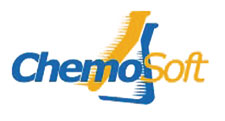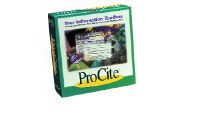Advertisement
Grab your lab coat. Let's get started
Welcome!
Welcome!
Create an account below to get 6 C&EN articles per month, receive newsletters and more - all free.
It seems this is your first time logging in online. Please enter the following information to continue.
As an ACS member you automatically get access to this site. All we need is few more details to create your reading experience.
Not you? Sign in with a different account.
Not you? Sign in with a different account.
ERROR 1
ERROR 1
ERROR 2
ERROR 2
ERROR 2
ERROR 2
ERROR 2
Password and Confirm password must match.
If you have an ACS member number, please enter it here so we can link this account to your membership. (optional)
ERROR 2
ACS values your privacy. By submitting your information, you are gaining access to C&EN and subscribing to our weekly newsletter. We use the information you provide to make your reading experience better, and we will never sell your data to third party members.
Physical Chemistry
Digital Briefs
New Software and Websites for the Chemical Enterprise
by Lauren K. Wolf
March 16, 2009
| A version of this story appeared in
Volume 87, Issue 11
Web-Based Chemistry Markup Platform Rolled Out
After extensive testing, the team at ChemZoo, based in Wake Forest, N.C., officially welcomed its newest “critter,” ChemMantis (Chemical Markup & Nomenclature Transformation Integrated System), early this year. Using entity extraction algorithms from the SureChem Development Kit (surechem.org) and chemical dictionaries, this Web-based platform identifies chemical names, groups, families, and other terms in documents.
With conversion software, ChemMantis then generates structures from the terms, integrates related informational blurbs, and connects the information to the ChemSpider chemical database, Wikipedia, Google, and the National Center for Biotechnology Information’s Entrez database. Users can select which terms—including names, elements, reactions, hardware vendors—they want to highlight in a particular article. The desired information and links pop up when rolled over with a mouse. Although ChemMantis is in a demonstration stage—its capabilities are currently being shown off in the open-access online ChemSpider Journal of Chemistry—it will eventually be a product for purchase. To submit an article to the journal, contact ChemZoo at info@chemspider.com. ChemZoo, www.chemmantis.com
Websites
Reaxys is a new Web-based workflow tool for synthetic chemists. Released in January by Elsevier, Reaxys includes a synthesis planner for designing optimum routes and provides users access to three databases—CrossFire Beilstein, CrossFire Gmelin, and the Patent Chemistry Database. Searches for structures and single or multistep reactions yield a results set with individual records referenced to patents or journal sources. Users can generate query structures from chemical names, identifiers, and Chemical Abstracts Service Registry Numbers and can filter search results by key properties, synthesis yield, or other ranking criteria. Current CrossFire customers may use Reaxys in parallel for an interim period until migration between systems is complete. Elsevier, www.info.reaxys.com
The Ernest B. Yeager Center for Electrochemical Sciences (YCES) at Case Western Reserve University, Cleveland, Ohio, hosts a trio of interlinked educational websites on electrochemistry for educators and students. The main site, the Electrochemical Science & Technology Information Resource (ESTIR), is a repository of general information that is divided into 13 sections, including popular-science articles, books, and short courses. ESTIR also contains a section with more than 1,000 links to educational websites that are indexed by topic. Users can employ a search tool to find information on everything from cyclic voltammetry to instructions for making a battery out of a lemon. In a different ESTIR section, students looking for their ideal graduate program can search an extensive list of principal investigators with research interests in electrochemistry. The other two websites hosted by YCES are the Electrochemistry Encyclopedia (electrochem.cwru.edu/ed/encycl) and the Electrochemistry Dictionary (electrochem.cwru.edu/ed/dict). The encyclopedia currently contains 33 articles about various electrochemistry topics that are written in a popular-science style by experts in the field. Any terms in the articles that might require further explanation are linked to the dictionary, which contains more than 1,000 definitions. Case Western Reserve University, electrochem.cwru.edu/estir
Software
AMPAC 9.0 is the latest upgrade of Semichem’s semiempirical quantum mechanic program. The new version includes two new models: a parameterization method (PM6) with the capability to carry out calculations on molecules containing most transition metals and Recife Model 1 (RM1), which is a reoptimization of traditional AM1 parameters from an improved data set. AMPAC 9.0 also includes AMSOL solvation models as part of the basic license and has improved Configuration Interaction (CI) tools for controlling molecular orbital occupancy and spin. AMPAC’s graphical user interface (GUI) also has received a face-lift; users can manage molecular orbitals graphically (shown) by dragging and dropping electrons from one orbital to another. The GUI can generate animations of calculated vibrations and reaction progress and has improved capabilities for importing information from Protein Data Bank files. Semichem,www.semichem.com/ampac9
Lauren K. Wolf writes Digital Briefs. Information about new or revised electronic products can be sent to d-briefs@acs.org.
.








Join the conversation
Contact the reporter
Submit a Letter to the Editor for publication
Engage with us on Twitter